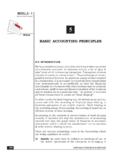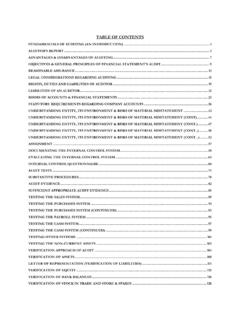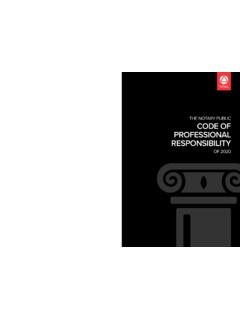Transcription of Divestitures - Deloitte
1 Life Sciences accounting and Financial Reporting Update . Interpretive Guidance on Acquisitions and Divestitures March 2017. Acquisitions and Divestitures Introduction Worldwide, the growing demand for health care services, fueled by aging populations and burgeoning middle classes along with expectations of higher-quality care and a squeeze on funding is driving a need for new business models. With public finances stretched and austerity measures in place in the aftermath of the global financial crisis, governments in countries from the United States and the United Kingdom to Japan, China, and Brazil are rethinking their health care strategies. In such an environment, companies must find new ways to improve the efficiency of their operations, increase their R&D1. capabilities, tap into alternative sources of innovation, and acquire new customers. As a result of these challenges, significant merger and acquisition (M&A) activity has occurred in the life sciences industry in recent years.
2 Manufacturers have continued to search for opportunities to access new markets, mitigate risk, and replace revenues and cash flows lost as a result of pricing pressures and patent expirations associated with the patent cliff.. An entity must use significant judgment in applying the guidance on accounting for M&A transactions. For example, the application of the guidance in ASC 8052 on accounting for business combinations can differ significantly depending on whether the acquired entity is considered a business or an asset.. Similarly, application of the guidance in ASC 205 on the presentation and disclosure of discontinued operations related to divestiture transactions fundamentally affects financial statement presentation. The sections below discuss some of the accounting issues related to acquisitions and Divestitures that life sciences entities frequently encounter, as well as recent SEC comment letter feedback and FASB. standard-setting developments related to this topic.
3 Industry Issues Acquisitions Determining Whether an Asset Group Constitutes a Business In recent years, M&A activity has increased in the life sciences industry as entities have continued to look for ways to expand their pipeline of products in development. An entity must use significant judgment in evaluating whether a transaction represents the acquisition of a business. Thinking It Through The discussion below is based on the definition of a business under the current guidance in ASC 805. However, in January 2017, the FASB issued ASU 2017-01 to clarify the definition of a business. The ASU affects all entities that must determine whether they have acquired or sold a business. For public business entities, the ASU is effective for annual periods beginning after 1. For a list of abbreviations used in this publication, see Appendix B. 2. For the full titles of standards and other literature referred to in this publication, see Appendix A. 1.
4 December 15, 2017, including interim periods therein. For all other entities, the ASU is effective for annual periods beginning after December 15, 2018, and interim periods within annual periods beginning after December 15, 2019. Early application is permitted as follows: 1. For transactions for which the acquisition date occurs before the issuance date or effective date of the amendments, only when the transaction has not been reported in financial statements that have been issued or made available for issuance. 2. For transactions in which a subsidiary is deconsolidated or a group of assets is derecognized that occur before the issuance date or effective date of the amendments, only when the transaction has not been reported in financial statements that have been issued or made available for issuance. See the Clarifying the Definition of a Business section below for further information. Question What asset groups constitute a business? Answer In a business combination, the net assets acquired (if the acquisition is of net assets) or the entity over which control is obtained (if the acquisition is of equity interests) must constitute a business.
5 ASC. 805-10-20 defines a business as follows: An integrated set of activities and assets that is capable of being conducted and managed for the purpose of providing a return in the form of dividends, lower costs, or other economic benefits directly to investors or other owners, members, or participants. ASC 805-10-55-4 through 55-9 provide implementation guidance to help entities identify what constitutes a business: ASC 805-10. 55-4 A business consists of inputs and processes applied to those inputs that have the ability to create outputs. Although businesses usually have outputs, outputs are not required for an integrated set to qualify as a business. The three elements of a business are defined as follows: a. Input. Any economic resource that creates, or has the ability to create, outputs when one or more processes are applied to it. Examples include long-lived assets (including intangible assets or rights to use long-lived assets), intellectual property, the ability to obtain access to necessary materials or rights, and employees.
6 B. Process. Any system, standard, protocol, convention , or rule that when applied to an input or inputs, creates or has the ability to create outputs. Examples include strategic management processes, operational processes, and resource management processes. These processes typically are documented, but an organized workforce having the necessary skills and experience following rules and conventions may provide the necessary processes that are capable of being applied to inputs to create outputs. accounting , billing, payroll, and other administrative systems typically are not processes used to create outputs. c. Output. The result of inputs and processes applied to those inputs that provide or have the ability to provide a return in the form of dividends, lower costs, or other economic benefits directly to investors or other owners, members, or participants. 55-5 To be capable of being conducted and managed for the purposes defined, an integrated set of activities and assets requires two essential elements inputs and processes applied to those inputs, which together are or will be used to create outputs.
7 However, a business need not include all of the inputs or processes that the seller used in operating that business if market participants are capable of acquiring the business and continuing to produce outputs, for example, by integrating the business with their own inputs and processes. 2. ASC 805-10 (continued). 55-6 The nature of the elements of a business varies by industry and by the structure of an entity's operations (activities), including the entity's stage of development. Established businesses often have many different types of inputs, processes, and outputs, whereas new businesses often have few inputs and processes and sometimes only a single output (product). Nearly all businesses also have liabilities, but a business need not have liabilities. 55-7 An integrated set of activities and assets in the development stage might not have outputs. If not, the acquirer should consider other factors to determine whether the set is a business.
8 Those factors include, but are not limited to, whether the set: a. Has begun planned principal activities b. Has employees, intellectual property, and other inputs and processes that could be applied to those inputs c. Is pursuing a plan to produce outputs d. Will be able to obtain access to customers that will purchase the outputs. Not all of those factors need to be present for a particular integrated set of activities and assets in the development stage to qualify as a business. 55-8 Determining whether a particular set of assets and activities is a business should be based on whether the integrated set is capable of being conducted and managed as a business by a market participant. Thus, in evaluating whether a particular set is a business, it is not relevant whether a seller operated the set as a business or whether the acquirer intends to operate the set as a business. 55-9 In the absence of evidence to the contrary, a particular set of assets and activities in which goodwill is present shall be presumed to be a business.
9 However, a business need not have goodwill. The guidance in ASC 805-10-55 does not constitute a definitive checklist; an entity must use significant judgment and consider all facts and circumstances when assessing whether a group of assets constitutes a business. When it is not clear whether an integrated set of assets and activities meets the definition of a business, it may be helpful to first identify all of the inputs, processes, and outputs that were acquired. If all of the inputs and processes necessary to create outputs were acquired, the set is likely to be a business. However, if all of the inputs and processes necessary to create outputs were not acquired, or if the set is not currently producing outputs, further consideration is necessary. For the set to qualify as a business, an entity does not necessarily have to acquire all of the inputs and processes necessary to make outputs. If the set can be easily integrated into a market participant's operations, or the missing inputs or processes can be readily acquired without significant delay or effort, the set may qualify as a business.
10 If the set is not yet producing outputs, it may still qualify as a business. Development-stage entities might not yet have outputs, but if the set has begun operations, has inputs and processes, and is following a plan to produce outputs and reach customers, it is likely to qualify as a business. Example 1. Pharma Co. enters into a worldwide license, manufacturing, and distribution agreement with Biotech Co. for a compound in preclinical development. Pharma Co. receives the right to manufacture, market, and distribute the compound in perpetuity if or when regulatory approval is obtained; however, Pharma Co. does not acquire any tangible manufacturing assets, employees, or contract manufacturing or research arrangements. 3. Pharma Co. identifies numerous missing elements for producing outputs, including (1) inputs ( , regulatory-approved compound, equipment and facilities, R&D personnel) and (2) processes ( , contract or other manufacturing).












